The post India Is Home To The World’s Biggest Outdoor Laundromat appeared first on The Expeditioner Travel Site.
]]>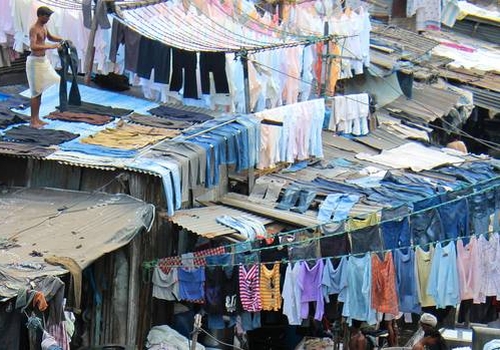
Lest you think all records in The Guinness Book of World Records are inane, useless markers of time-poorly-spent by various humans around the world, consider this one: Mumbai’s Dhobi Ghat was noted as the record holder for the “most people hand-washing clothes simultaneously at a single location” in March 2011. Take that guy who attached 150 clothespins to his face.
The Globe and Mail has this great photo essay about the ghat, chronicling its history and portraying what everyday life is like for the workers there.
As the piece notes, “Dhobi Ghat is where Mumbai’s traditional laundrymen work in the open to wash clothes from different parts of the city. The open air laundry has about 700 washing platforms made of stones where about 200 washer-men families have been washing clothes as their family business for decades.”
[Mumbai boasts the world’s largest open air laundry via The Globe and Mail]
By Matt Stabile

ABOUT THE AUTHOR
 Matt Stabile is the Founder and Editor-in-Chief of The Expeditioner. The Expeditioner began in 2008 and is headquartered in New York City. You can read his writings, watch his travel videos or contact him at any time at TheExpeditioner.com. (@TheExpeditioner)
Matt Stabile is the Founder and Editor-in-Chief of The Expeditioner. The Expeditioner began in 2008 and is headquartered in New York City. You can read his writings, watch his travel videos or contact him at any time at TheExpeditioner.com. (@TheExpeditioner)
The post India Is Home To The World’s Biggest Outdoor Laundromat appeared first on The Expeditioner Travel Site.
]]>The post Oprah: “I Heard Some Indian People Eat With Their Hands” appeared first on The Expeditioner Travel Site.
]]>To the rest of the world: On behalf of all American travelers, I’m sorry. I know that according to recent polls, you think Americans are the worst tourists, and that angers me. Perhaps it’s not making much difference, but one of my goals through this humble site, and something I’m sure is a goal of the travel blogging community as a whole — beside eternal fame and glory — is to try to help change this. By writing about new destinations, by encouraging travel outside our own borders and by providing travel tips, I hope that in its own small way, this site and others like it are doing their own small part to help change the world’s perceptions about American travelers.
Namely, the perception that we’re unadventurous, that we’re afraid to explore, that we don’t like to leave our comfort zones, and that we are culturally insensitive. I know that for my American friends who travel, these descriptions are not true. However, I’m not friends with Oprah. You see, Oprah has a new special airing on TLC called Oprah’s Next Chapter: India that, from the reaction it’s been getting around the world, isn’t doing much by way of dispelling the myth of the “Ugly American” traveler. This is not good.
“Myopic, unaware, ignorant and gauche. This was Middle America at its best worst,” so writes columnist Rajyasree Sen of Firstpost.com in her recent critique of the show. Sen details how Oprah begins her show with a tour of a Mumbai slum, capping her visit with an interview with a family living in a 10×10-foot shack. While doing so, Oprah asks the young children living there, “Don’t you feel it’s too cramped?” and to their father she asks whether he is happy and satisfied (to which, in true Oprah fashion, elicits a teary response from the father in front of his children).
Never mind the fact that the children are probably very happy — thank you very much — in their humble abode, and hopefully when they’re a little older, maybe they’ll have some of the same opportunities Oprah had and make their way out of the slums. Until then, why not avoid pointing out the obvious? And never mind the fact that the father’s economic situation is probably less his own doing, and more likely a result of various extrinsic factors such as post-colonialism, economic changes in the developing world, ingrained socials class structures unique to the country, and maybe a few bad breaks along the road of life. Why not ask him whether he’s happy about the state of economic disparity as a result of economic upheaval and rapid development in his country? That may elicit a more useful response.
Next, while attending a dinner party at a wealthy family’s house in Mumbai, Oprah exclaims upon presentation of the meal, “So, I hear some people in India still eat with their hands!” (See the video above.) The host family takes this observation in stride — of course she doesn’t know this, she’s from America! — then shows Oprah how to properly eat her meal the Indian way with one hand. I wonder if this household expected Borat to show up around dessert time with a bag of his own feces to round out the cultural ignorance of their dinner party?
I know Oprah may seem like an easy target, but we’re not exactly talking about some uninformed reality star here. We could easily imagine a Snookie or a Jessica Simpson acting in such a manner — they have practically made their careers wallowing in a state of oblivious self-deprecation. But Oprah — whose business acumen, show business skills and penchant for brand building made her the highest-earning woman in entertainment in 2011 — surely demands more respect than them? Surely Oprah’s traveled the world, rubbed shoulders with international socialites and maybe even watched a foreign flick or two on Netflix? Or, as the world expects, is it simply that you can take the traveler out of America, but you can’t take the America out of the traveler.
The worst isn’t that it’s Oprah in particular that is making these transgressions. It’s the fact that it’s somebody so visible, someone whose shows people actually watch, and whose actions are for better or for worse reflected upon ourselves as Americans.
I liken it to the crowded dinner table at restaurant for a friend’s birthday. The waiter is hustling, trying their hardest to get the orders right, the kitchen is putting out a good meal as quickly as possible, and the bus boys are keeping the water glasses full and the dirty plates off the table. But it only takes the actions of that one guest whose louche behavior, constant complaining about the service and refusal to leave a decent tip that is going to influence how the restaurant is going to remember the table. The world is the restaurant, the Americans are the guests and Oprah is the annoying roommate that your cousin brought along because she felt bad leaving her home on a Friday night. Next time, tell your cousin to leave her roommate at home. The meal will be much better, and the service will be just as good next time you’re there. Otherwise, risk getting stiffed with the table by the bathroom on your next visit.
The post Oprah: “I Heard Some Indian People Eat With Their Hands” appeared first on The Expeditioner Travel Site.
]]>The post The Other Face Of India appeared first on The Expeditioner Travel Site.
]]>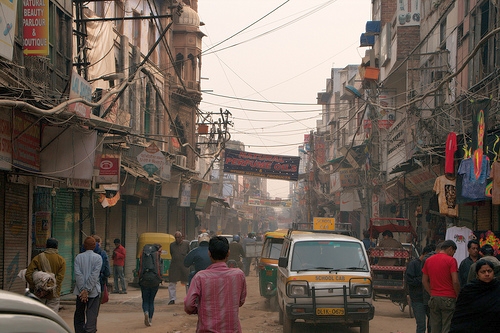
A group of smiling young faces stare back at you from the photograph. Their bodies are thin and semi-clothed, and they are sitting in filth; a stagnated water puddle serves as a befitting background. Kids of slum dwellers in Kolkata are extremely excited at having their picture taken. Their joviality belittles their circumstances. This shot may win a photo contest someday.
A Sadhu Baba is sitting on a ghat in Varanasi, bestowing spiritual reverence to his followers. Ash-smeared forehead, long graying beard, minimal clothing and a peaceful expression — he has it all. Dried-up flowers and half-used incense sticks — remnants of previous religious ceremonies — are strewn around. The atmosphere symbolizes everything that is holy and spiritual.
A cow is sitting in the middle of the road in a congested market. Cars, buses and rickshaws all go by without as much as anyone taking another look. Traffic is rowdy, horns are blaring and people are jostling for space to walk. All around, there are old crumbling buildings and older shops, dilapidated signboards and dirty walls.
This is India as the world sees it.
The image of India as a country is plagued with clichés. In most cases, even before I open a publication or start reading an article or blog about someone’s time in the country, I usually know what’s coming. It’s either a recollection of a resilient experience in a budget hotel somewhere in the depths of the city or a picture of the sunset on the Ganges with (possibly) a floating dead body as the backdrop. Better, a spiritual experience bestowed upon them during their stay in a yogic ashram.
Every country has elements associated with it that represent and symbolize it — something new that it has to offer. In the case of India, the novelty element manifests itself in the form of the elephants on the road, the beggars on the traffic light signals, the sadhu on the ghats and the villagers carrying pots of water in sweltering summer heat.
The exoticism of India lies in the picture of the old, emaciated rickshaw-puller or the eunuchs dancing on the streets. This is the picture of India that sells.
As an Indian, however, I’d say that this picture is biased and incomplete.
India has another face too: that of being a developing, progressive, educated and culturally diverse nation. A face that is hardly recognized or rarely spoken about, simply because it mirrors itself as something that is not unique for the Western world. To a visitor, visuals of a prosperous life with all its peripherals are not as exciting simply because it’s a life they have been used to for long and in fact have left behind. It’s not what they have come seeking.
This thought in mind, I spoke to a few friends and acquaintances whom I consider models of modern-day India. Did this generalization, this one-sided representation bother them too? Isn’t this stereotype of being a country of poor, hungry people damaging to India? What does the “other face” consist of? How can it be brought forward to the world?
Akash is a software developer works for a multinational company in New Delhi. He’s young, opinionated and also an atheist. He wonders whether expectations are blinding visitors from the truth. “The answer is to explore both sides of the coin. Reflections of modern-day India, in the form of a thriving middle class, a growing economy and a youthful global culture may not be interesting to a Westerner per se, but this is a picture that is completely relevant to what a huge part of India is about, especially today.”
I couldn’t agree more, and I thought of some ways a traveler to India can experience this “other face of India.”
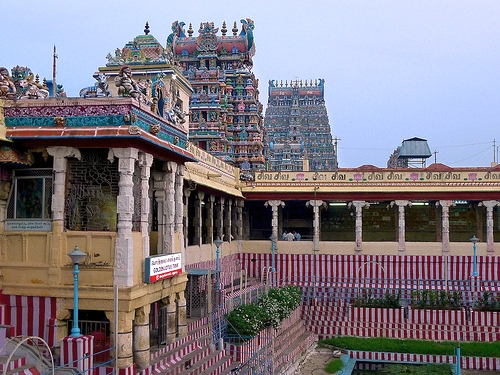
Meet the Locals
Spend a little more time in the bigger cities interacting with the youngsters as well as with the urban, working-class Indians, to gain an insight into life as it happens on an everyday basis.
Explore Indian Music
Hindustani classical music is the oldest form of music in the world. Institutes such as the ITC music academy in Kolkata chronicle this history, and live classical music concerts are frequently held at India International Centre in Delhi. Local rock music has evolved as a result of a fusion between old classical and contemporary sounds. Live gigs by homegrown rock bands like Parikrama and Agnee fill weekend calendars for clubs and lounges all over the country.
Sample the Food
India has 28 states and 7 union territories, each having a cuisine of its own. Curry doesn’t even begin to cover it. Every state food is distinct, including the spices that are used, the cooking methodology and even how it’s consumed in some cases. Dilli Haat in New Delhi, a traditional open-air handicrafts bazaar, is a one-stop destination for food from every single state in India.
View the Arts
Indian art forms are versatile starting from local traditional arts like Madhubani and Kalamkari paintings to more modern artwork by well-known Indian painters showcased at venues such as the respective National Gallery of Modern Art museums in New Delhi, Mumbai and Bangalore.
Explore the Architecture
There are 17 different architectural forms present in India. Dravidian architecture, Chaulakya architecture, Rajasthani architecture and Architecture of Kerala are part of this list. Meenakshi Amman Temple in Madurai, the Konark and the Sri Venkateshwara Temple in Tirupati are all in South India and are some of the best examples of old intricate forms of Indian architecture.
*
One of the reasons why we travel is to expand our own view of the world. Preconceived notions of a country and its culture is detrimental not only to the nation but to the ethos of this purpose as well.
For someone who belongs to the developed world, the visuals of a less prosperous life, heart-wrenching poverty and soulful spiritualism are extremely attractive because they add meaning and perspective to their travel experience. It’s a testimony to the human spirit and highly fulfilling on a personal level.
However, it is also important to realize that as a visitor to a country, one carries a greater responsibility — a responsibility to view and then portray that country in its entirety, not just in a way one chooses to see it.
I’m not advocating telling someone how exactly to travel, or what to see specifically. Instead, I simply raise the question of what responsibilities travelers have while seeing the world.
Is travel just a personal pursuit, or is it a means to an end? Is it just an avenue for one’s own individual gratification, or is there a greater purpose? Should travel be a medium for spreading awareness about social issues? And should it serve to dispel those preconceived notions so firmly in place within us all?
What do we owe to the country we choose to visit?
The answers lie within ourselves. In the end, it’s just a matter of asking the questions.
By Priyanka Kher
[Pahar Ganj in the morning by Christian Haugen/Flickr; Meenakshi Amman Temple by Brad Coy/Flickr]

About the Author
 Originally from India, Priyanka called New Zealand home for six years and lives in he United States now. Road trips, food and writing constitute the three big loves of her life. She is an optimist who believes that life goes on, no matter what. You can read more about her and her musings at RoadIsWhereTheHeartIs.wordpress.com.
Originally from India, Priyanka called New Zealand home for six years and lives in he United States now. Road trips, food and writing constitute the three big loves of her life. She is an optimist who believes that life goes on, no matter what. You can read more about her and her musings at RoadIsWhereTheHeartIs.wordpress.com.
The post The Other Face Of India appeared first on The Expeditioner Travel Site.
]]>The post A Case For Travel Photography Before Digital Cameras appeared first on The Expeditioner Travel Site.
]]>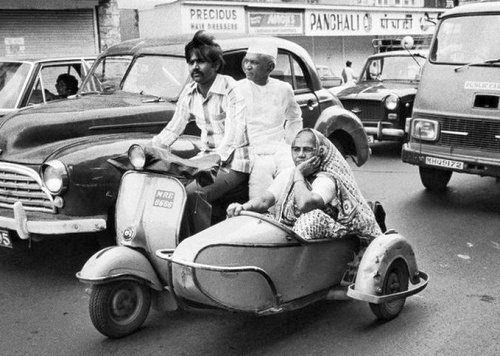
The BBC recently featured a number of noted photographer Pablo Bartholomew’s stunning black-and-white pictures of Mumbai (then Bombay) from the ’70s and ’80s, a time long before steel barons and call center magnates began erecting tall glass homes and whole neighborhoods were transformed, making room for the country’s burgeoning middle class. A time also long before digital cameras and photo-editing programs could make even the worst pictures look good, and when a grainy black-and-white shot could help tell a better picture than a finely tuned Photoshopped image ever could.
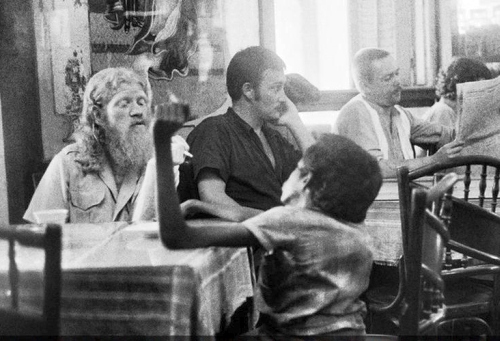
One of my favorites is an image that features what is obviously an out-of-place ex-pat nonchalantly smoking a cigarette and talking with what appears to be a small boy among a group of locals reading the paper. The disregard to his presence seems to hint that the existence of a long-hair, bearded hippy in their midst was not an uncommon occurrence during this time period — and also indicates this traveler’s successful integration into an unfamiliar culture. A great shot any backpacker can be proud of.
Bartholomew’s exhibit of photos from Mumbai in the ’70s and ’80s is now on show in New Delhi at the PHOTOINK gallery, but many of the 100-plus photographs from the collection can be seen here at the gallery’s site.
[Images courtesy of Pablo Bartholomew]
The post A Case For Travel Photography Before Digital Cameras appeared first on The Expeditioner Travel Site.
]]>The post Tips For Train Travel In Mumbai (Personal Space Not Included) appeared first on The Expeditioner Travel Site.
]]>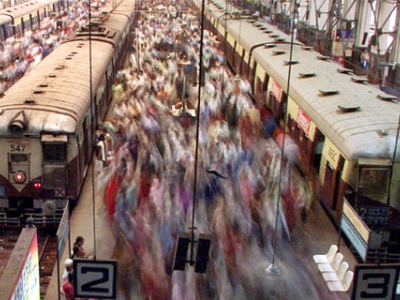
The instant I start to get annoyed at fellow passengers while on the New York City subway, I remind myself, “Matt, things could be much worse. If you think this is crowded, picture what it’s like in Tokyo, Moscow or Mumbai right now.” Then my heart rate slows, I jab an elbow into the ribs of the person that won’t move into the center of the train, and I make my way to an isolated portion of the train to read quietly and hopefully not smell too many uncomfortable scents at once.
Of course train travel is one of the easiest activities a traveler can do to allow themselves to experience what life is like for the locals, and this is especially true in Mumbai. As Lonely Planet notes about train travel in Mumbai, “The train is one of the few places where you can participate in a truly local ritual, and distinctions between Indian and foreigner fade. Everyone here is just a passenger.”
For first time travelers, LP has a few helpful hints for train travel in the megalopolis.
Crowded trains are par for the course here, but like anywhere, avoid rush hour for a slightly more comfortable trip (avoid 7-11 a.m. and 4-8 p.m.). Keep aware of when your station is coming up, and start making your way to the doors two stations ahead to ensure you get to actually leave. (By the way, do not do this in New York, or I promise you will be the one I’m elbowing on the train). Finally, check out the “tourist tickets” for sale that allow you to avoid the hassle of figuring out the train’s complex ticket system, and which give you unlimited rides for a certain number of days.
The post Tips For Train Travel In Mumbai (Personal Space Not Included) appeared first on The Expeditioner Travel Site.
]]>The post Destinations To Help Cure World Cup Blues appeared first on The Expeditioner Travel Site.
]]>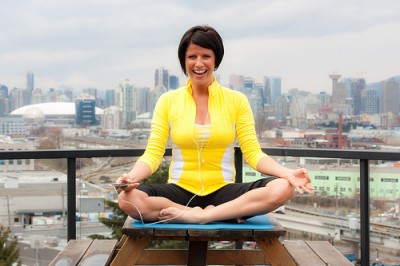
Now that the World Cup is officially over, outside of Spain, the world is feeling quite a void right now. One spin through your Facebook statuses will prove that. So when Team England bowed out of the tourney, the UK-based Wanderlust had more than enough reasons to create a list of destinations specifically focused to boost happiness.
Got a few days off? Head to Montreal’s standup festival this weekend (July 12-18) where comedians such as Steve Martin, Lewis Black and John Pinette will take over the city. If you’re looking for more of an enlightening experience, head to Mumbai and enroll in a few classes of laughter yoga. You’ll boost your mood through a combination of yogic breathing and laughing.
Will you need more than just a few days? Let your inner hippie run wild: rent a VW van and hit up some festivals. I never saw flower children upset because their teams lost a World Cup game. For a more guaranteed cure, Hawaii’s Aloha Festival (Sept 2-25) will do the trick. Grab your grass skirt, rum cocktail, and hula the nights away. Before long you’ll forget the World Cup even took place.
Whatever you do, avoid the town of Happy, Texas, at all costs. Shedding the World Cup blues can’t be forced.
The post Destinations To Help Cure World Cup Blues appeared first on The Expeditioner Travel Site.
]]>The post Mumbai: Experiencing Orchestrated Chaos appeared first on The Expeditioner Travel Site.
]]>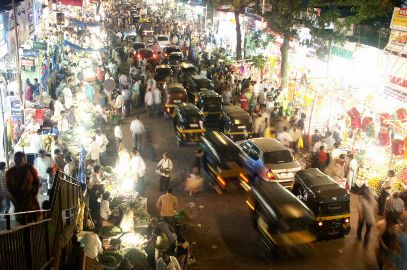
I have always been hyper-organized, borderline dogmatic, and would get frustrated anytime things did not go according to plan. Even growing up, some people were proud to say they make full, three-second stops at stop signs. Actually, just today I was hollered at by a lady across the street as I glided through a four-way stop on my bicycle. I guess my standards of structure have changed.
It wasn’t until I was 22, stepping off the plane in Taiwan’s International Airport, that I began to realize how “structured” a life I had been living. Sitting in the cab on the way to Hsin Chu — an hour west of Taipei — zooming in between and around vans, cars, motorcycles and scooters was a heart-stopping, yet mind-blowing moment: chaos can work.
This was the realization highlighted in David Armstrong’s article in the San Francisco Chronicle. He ventured to Mumbai and caught a glimpse of the beauty in, what he refers to as, “orchestrated chaos”.
As a first-time visitor, Armstrong refers to Mumbai as India’s maximum city:
It is the financial capital of a nation of 1.1 billion people, a major manufacturing hub, home of the busiest Indian airport and the busiest Indian seaport. It is also the nerve center of the country’s ebullient Hindi-language movie and television industry.
Being the hub of nearly everything, the sense of chaos arises from its business environment: Workers commuting from the outskirts to downtown offices, people pedaling in the streets, the constant construction of corporate towers. Yet, beneath the bustle, there still seems to be harmony.
For example, as Armstrong points out, due to commuter congestion inside the trains, most workers are unable to bring a lunchbox. As a response to this, the wives will make lunches and have cyclists — dabbawallas — ride homemade meals to their husbands downtown. These dabbawallas are so organized that they are invited by business schools in India to lecture on time management. The dabbawallas found a way to flow.
If you get a chance, watch Slum Cities: A Shifting World, a CBC exposé on the intricacies of informal markets in Mumbai and Rio de Janeiro. Beneath the blue tarpaulin that shade the slums lies some of the world’s most renowned, hyper-organized micro-economies. Referred to as the “informal sector”, whole communities have found ways to maintain, even thrive, with small-scale, local business transactions. To fresh eyes it may seem haphazard, but there is an organized flow that keeps these markets afloat.
I have always found Mumbai fascinating, not only because its exotic, or rich in history and context, but because orchestrated chaos is now music to my mind.
By Brit Weaver

About the Author

Toronto born and based, Brit is an avid leisure cyclist, coffee drinker and under-a-tree park-ist. She often finds herself meandering foreign cities looking for street eats to nibble, trees to climb, a patch of grass to sit on, or a small bookstore to sift through. You can find her musing life on her personal blog, TheBubblesAreDead.wordpress.com.
The post Mumbai: Experiencing Orchestrated Chaos appeared first on The Expeditioner Travel Site.
]]>The post Welcome To The Temple Of Peace And Harmony. Now, Spread ‘Em! appeared first on The Expeditioner Travel Site.
]]>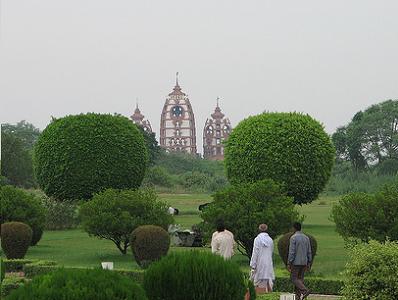
Just as America has it’s 9/11 which altered its future, India has it’s November, 2008. Unfortunately, the results of these events are a part of the times we currently live in. This post on IntelligentTravel is a sobering reminder of that.
The article talks about the security measures instated at New Delhi’s ISKCON Hare Krishna Temple since the attacks in Mumbai. Just coming back from the ease and serenity of the temples in the Far East, it’s hard for me to picture a line of people waiting for a pat-down before entering a place of worship as if it’s a Packers game. Security at places frequented by locals and travelers is now a top priority. Although perhaps necessary, it is unfortunate.
As the author waited at the security check, she overheard the most striking quote I’ve read in quite some time, “If God needs all this to protect him, how on Earth will he protect me?”
The post Welcome To The Temple Of Peace And Harmony. Now, Spread ‘Em! appeared first on The Expeditioner Travel Site.
]]>The post Organized Chaos Meets Chaotic Chaos: Welcome To Mumbai appeared first on The Expeditioner Travel Site.
]]>
In a city of 21 million (with some parts containing more than a million people per square mile), it’s almost impossible in Mumbai to come by peace and quiet or to avoid images of heartbreak while traveling in the city.
As David Farley describes in his piece at World Hum, a stroll on the way to Crawford Market, Mumbai’s main greenmarket, entails a conflicting experience of gaining the attention of child beggars, elderly vagabonds, and middle-aged peddlers, images made all the more poignant after seeing Slumdog Millionaire.
Upon finally arriving, David finds the market to be every traveler’s dream: an escape from the tourist trail and a glimpse into the inner-working of the local culture.
I eventually made it back to the Crawford Market and was dazzled by the medieval bazaar-like quality of the place. Sunlight soared in through breaks in the high, strewn-together canopy ceiling, illuminating bales of hay, tied up goats and wandering bovines. Muslim men, their white skull caps and beards identifying them from their fellow Hindu denizens, huddled together sipping tea, while veiled Hindu ladies sat on crates in a semicircle. There were no tourists. No big balloon salesmen. There was plain rice and no one offering to write my name on a grain. No one really even paid much attention to me.
The post Organized Chaos Meets Chaotic Chaos: Welcome To Mumbai appeared first on The Expeditioner Travel Site.
]]>